Richard’s Photography Blog
Recent Articles
Latest from the Blog

Our web designers – Graphene Digital Marketing
We recently decided to get our website updated and used a local company.
Graphene Digital Marketing is a company that specialises in web design and hosting. They have been in the industry for many years, and they helped us with our digital marketing strategy.
Our brief was for a new web design that shows off out product offerings, that would allow us to have a blog and to sell vouchers and other digital products. Once our site was delivered, we also engaged Graphene to look after our local SEO, that was just brilliant our local rankings were better than we could have imagined.
We are really thankful to Graphene Digital for all their creativity and helpfulness.
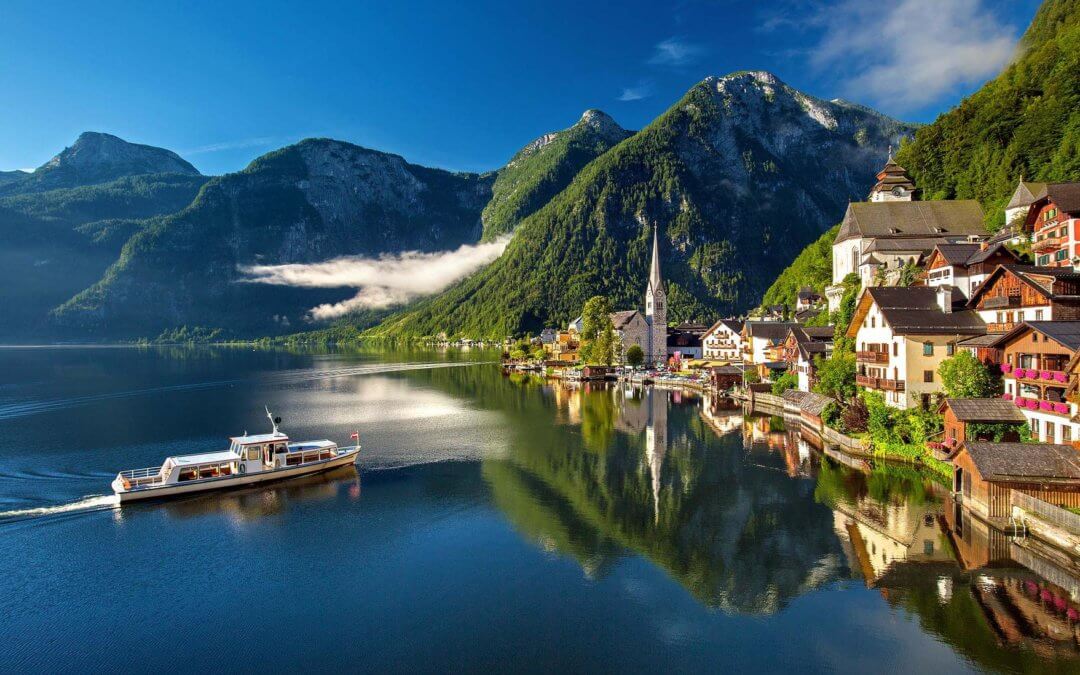
A Complete Guide to the Photography of Mountains
Photography of Mountains: Mountain photography is an excellent option for anyone interested in capturing landscapes with their cameras. Aside from its natural beauty, the mountains offer an excellent backdrop for landscape photography. This guide will give you 15 quick tips to help you improve when you chase mountains.
Hike the mountains
The mountain range offers an enormous quantity of stunning images from the steps outside your car door. A hike through the mountain ranges is incredibly beautiful and allows you the opportunity to capture images and to see beautiful mountain peaks and valleys. Getting into mountain ranges is exciting, but always take care to walk safely.
Use an app that allows for GPS tracking if you want to stay on the trails or stay in touch with emergency services.
During hiking, lighten up the packs. It’s possible that you will use the medium focal length lens and leave the telescope at the hotel.
It also makes sense to invest in lightweight Carbon Fiber tripods when you are pursuing your mountain photography.
Use foreground to create the scene
I have a favorite element that should be included as an area in a landscape mountain scene as the foreground. In the summer, mountains provide great foreground attractions no matter the season. My favorite landscapes are as simple as an area of tall grass at the end of the summer and colorful wildflowers at the start of winter. Foregrounds don’t have to necessarily make your mountain pictures more interesting. For images that use mountain scenery it may be worthwhile incorporating background images to them. I usually use foreground for color contrasts, or the lead lines to make my lines.
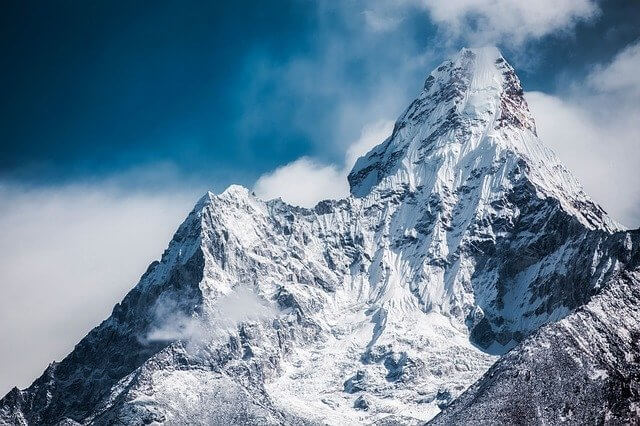
Mountain weather is dynamic and always changing
If you’re sitting in the mountains then you probably noticed that the mountain’s climate has its own characteristics. Due to wind and water, an idyllic day in the other side can become a rainy or snowy day in the other. Photographing mountains requires patience and flexibility. A gap in the sky can cause an intense but quick flood of light into a scene. I’ve seen it numerous times in photographs. rockies. If you are unable to get good lighting conditions or face clouds covering a large portion of the mountain you might try one or more longer focal lengths and get into detail shots.
Mountain Photography – Be ready to earn it
Mountain pictures are easy, but typically you need shots to make your work more unique and elaborate. It may not be easy or difficult, but if you’re hiking on steep slopes you will still need camera equipment and camping gear in your backpack. But that’s often the best part about mountains photography. The challenge of the adventure is equally rewarding as the end destination and may result in unplanned events and photos equally stunning and special. This journey will also teach patience, perseverance, and others essential for photography.
Watch the edges of your frame
I like to remind my children that mountains can feel like human beings! You won’t want to take off the head in portraits but make it clear that mountains are in the background.
Tell me the difference between keeping the house above the mountains or between the frames?
It varies if you have clouds or not or shoot at night skies. Try keeping the blue sky below the mountains at a minimum when it is dark.
Normally I recommend about one-quarter.
Using beautiful cloudy skies above mountains will add detail in your sky.
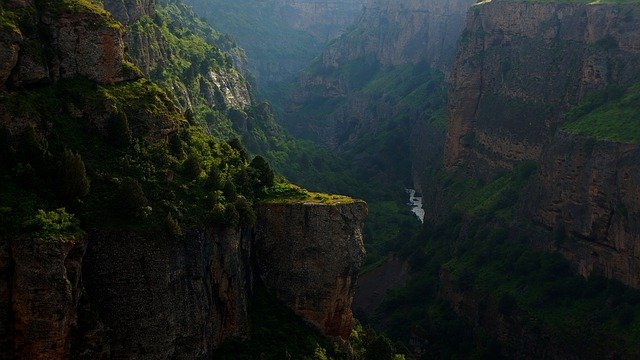
In Landscape Photography Depth is crucial
A key feature in mountain photography is depth. You must have a maximum depth of field of view to capture mountain beauty. If your pictures require shallow field depth it should be shot with smaller apertures for mountain photography. Normally f/7.0 or higher is best for mountain photography, as it depends upon your light and shooting environment. A higher depth leads to better, precise images. Obviously, this must be taken into consideration when you’re focusing on dynamic and detailed subjects like mountain.
Provide scale
Mountains are difficult, and by using people or structures in your picture, you create an impression of scale. It’s not just an attempt to throw people into an outfit with colour. Adding familiar elements to your landscape photography can bring extra interest as well as a sense of scale.
Go long
Typically when people begin to use the landscape photography method, they have to choose the best lens. But don’t get me wrong, it can also be useful in capturing rocky landscapes. The long lens will offer the same or perhaps more options for mountain photographers though. A longer lens with a focal range between 100 and 500mm lets you expand beyond your eye’s vision, and capture layered and beautiful features. A long lens can capture clouds on a mountain or alpen glowing in mountain peaks when the sun rises.
Creating emotion in your images
The mountains have an enormous impact, and can affect many. It is possible to trigger emotion, making memories impactful and difficult to forget. When taking photographs of mountain scenery remember to capture these emotions. Taking pictures of the first or final light of day on mountaintops, photographing certain seasonal factors like wildflowers or fall foliage or involving human figures, sizing or adding euphoria. An image is powerful enough to activate your senses and give you powerful feelings.
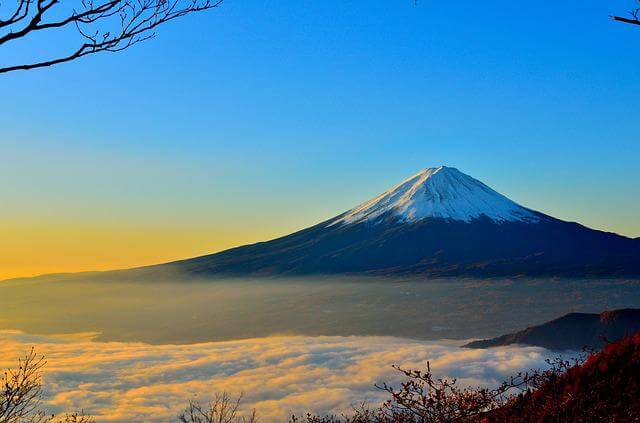
Don’t limit yourself to Iconic Shots
Various mountain landscapes are a popular photographic subject with iconic views and are often seen by most viewers.
While you can take a couple of shots from these common angles and perspectives, you can’t make anything that really captures the eye of the viewer — but re-creation can make it harder. Find more perspectives to create your own unique shot.
When looking for a place to explore, think about locations that are not known to many people.
Include background interest in your composition
Foreground Interest is important for landscape and natural photography. And maybe this interest is not more visible on pictures from mountains and peaks.
When the highest points are the main focal point of a shot it’s important to avoid the background dominated by the picture.
Alternatively, you could have the foreground element, in which outlines lead your viewers to the top of mountains. Use the element as the background to compose compositions.
Change your perspective
Mountain regions certainly have surprisingly diverse topographies and the change in the perspective can affect the end results dramatically. Try walking to a different place instead of staying in merely a single area to get another perspective of the same place. In a variety of instances, the best photographs can have different angles. Especially if you shoot in a location you’ve previously photographed many times.
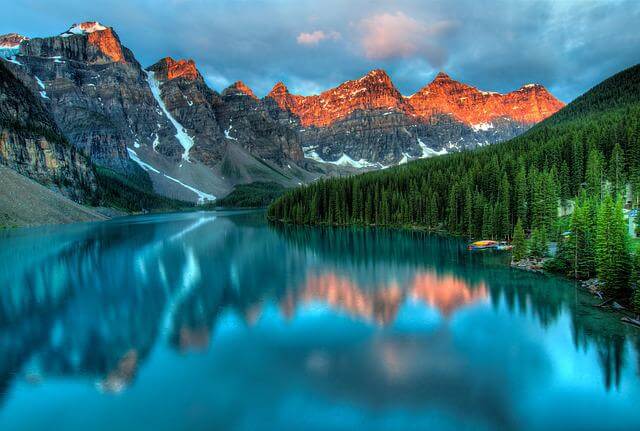
Prevent altitude sickness
Mountain sickness or AMS is a very serious a common condition that occurs during climbing at high elevation. The headache can cause nausea, tiredness, sleeplessness, dizziness, drowsiness, or insomnia. A AMS condition could cause more severe pulmonary and cerebral hypertension and can be fatal. Firstly, acclimatizing techniques can help prevent such a situation in vivo. You should start from low altitude, slowly climbing and don’t get swept into higher levels.
Don’t be afraid of trying bracketing
Depending on when you shoot, you’ll likely see smog from mountains and smog from the sun and the sky. In some scenes, it is impossible to have a single shot; Depending on the scene, some bracketing may be necessary. I usually bracket between 3 and 5 pictures for most scenes, then use a luminosity mask in Photoshop to produce this image. Continue reading Bracket & HDR photography with a camera without filters. Graduate Filtering can also be a useful solution.
Have the right gear
Then there’s all that goes on in photography. Walking boards can be helpful for navigating rough terrain or preparing an adventure that will last longer. The pole is used for stability and it distributes some of the impacts that come when walking from hips, ankles, knees, or back. It is especially important if you carry a lot of camera equipment. Always keep a backpack with an adequate strap for weight distribution and an adjustable belt for the waist.
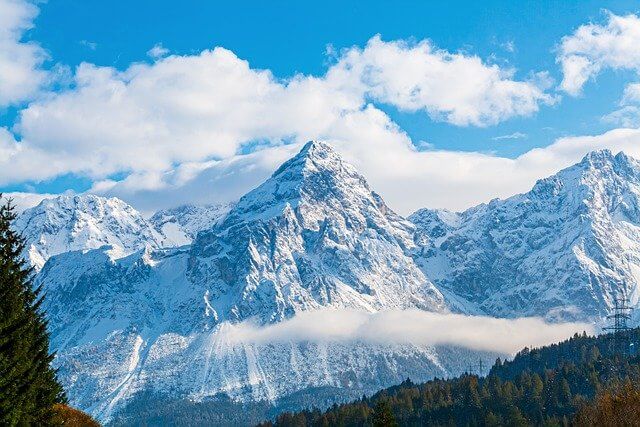
Use a Small Aperture
The smaller aperture allows for the viewer to focus on the scene more effectively. For mountain photography, you would normally need a lot of focus. The foreground element needs focus, but the distant peak needs focus if possible. It is important to use small apertures such as f/16 or f/23. Take a shot f22 not expecting a sharp shot from your camera. Most lenses are sharper to varying degrees, so testing them will help you determine how they perform.
Cover your skin
Even though your body is covered with clothing, gaps exist — particularly around your eyes. Alternatively, if your temperature is warm, you may expose your hands, shoulders and neck. Bring sunscreen since rays can become stronger at higher altitudes.
In winter you will also require insect repellant as the airborne critters will thrive during these times as well.
Wearing light colored clothing can stop insect bites. Photograph by Creative Commons.
Bracket Your Shots
Lighting and shadows can be tricky at high elevations, but may be useful when capturing photos.
It would mean taking multiple photos in a single scene and showing one shot for light parts of it (like the sky) and exposing another image for dark areas (like the valley, shadowing the valley and the sky).
The images are automatically mixed in Photoshop or you can create HDR pictures with Lightroom Photomatix or other HDR applications.
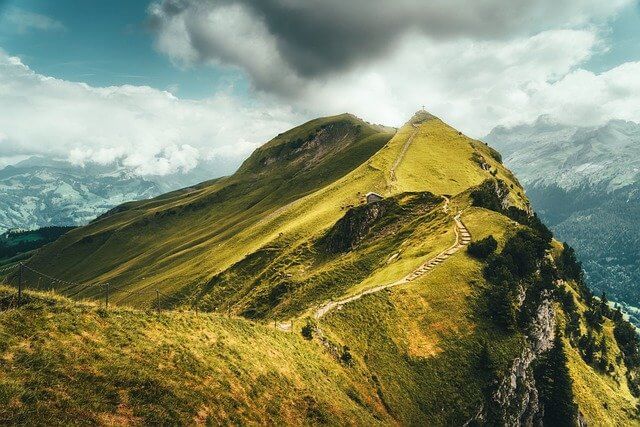
Contrast is everything
In mountain photography contrasts are everything. You must capture contrasts in the pictures you take of mountain scenery. Generally speaking, circular polarisers or CP filters are useful for capturing maximum contrast. A quick twist of a CP filters allows control over what contrast and color the images are displaying. CP filtering is helpful in controlling light reflections, which is important for mountain photography.
Fill your foreground
These are some typical landscape photography tips that still apply when photographing mountains. If you use a wide angle of view it will take up lots of room in the background. Choose the background of the topic then take a closer look. It could involve flowers, interesting rock formations, or a simple symbol. Taking the shot that blends the intriguing foreground with a gorgeous mountain background like the following:
7 Tips for Photographing Mountains
It’d be better to shoot on a mountain. It’s a magical place with jagged mountains and varying decorations. Several have glaciers on them, others have cascaded waterfalls.
Some of it looks as if it were colored as rainbows that rise from the landscape. This landscape provides many photographic possibilities.
The mountain scenery cannot be expressed through words but is still easily captured and conveyed in photographs.
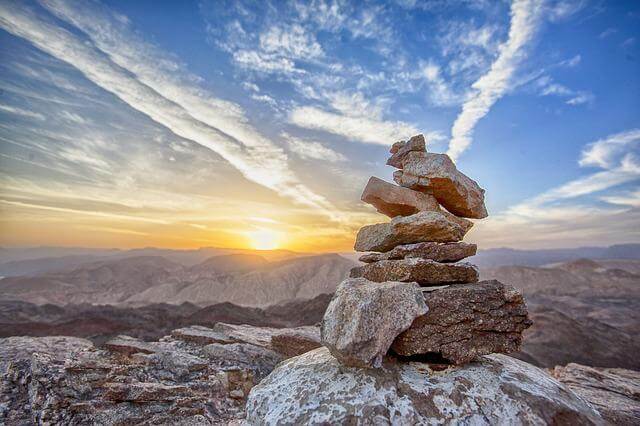
Try different focal lengths
It’s easy for a photographer to always use a wide-angle lens when photographing, but remember to enjoy the larger focal lengths. Sometimes I use the Nikon 50-50mm for pictures of the mountains.
Do I have a Nikon 14-24mm camera? How do I capture landscapes with telephoto camera? For instance strong winds blowing snow away and beautiful morning lights sprinkling across a rock-covered region.
Take action
Whenever a climbing accident happens, you have to take action immediately. If a climber is experiencing elevation sickness, it is important to descend immediately. You need to reach a distance of at least 300 ft. for recovery.
Take medication, breathe in oxygen, and stay in a pressurized glass bag for some relief from symptoms.
Bring a GPS device for emergency assistance whenever needed.
Carry a Lightweight Tripod
For photography mountain photos, you’ve typically had to go on hikes and sometimes you might even be obligated to take extensive trekking climbs and camping trips.
Your tripod can be heavy and impactful if you do such activities.
With the light tripod, you can easily take your trip and it will also prevent a user from leaving their tripod with them. See our recommended gear here.
Have backups?
Various components of the camera might fail or behave oddly during cold temperatures. Among them are your batteries. Cold temperatures are likely to drop your charge and leave your batteries with fewer life. Bring spares in your bag for warmth and remove the functions not required for camera use like the LCD display and flash. Keep the camera off for the duration of the video shoot.
Include people for scale
Photo: Lee Royland / C00. With most landscape images you’d likely try to remove people from the composition as much as you can. Sometimes, however, it may make more sense for a photographer if they include an image that helps you get an idea of the size and scale in landscapes. It doesn’t mean that you have to do it every time; find the best possible chance.
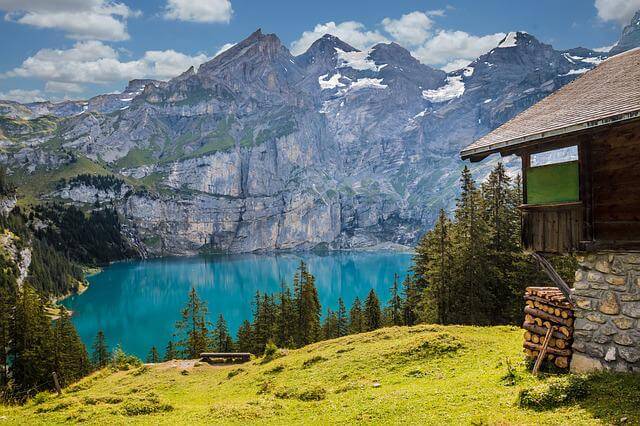
Light takes longer
If you are not used to shooting from the mountains, lighting is different from other scenery. Depending on sunrise and sunset colors can appear in clouds, but the peak can take hours of rising or dropping during golden hours.
Depending on other factors, it can take hours for light to rise or set. This should be understood, especially when you plan the photo.
Show scale with smaller elements
Again mountains are usually huge, but if you shoot from high-angle angles you’re pushing your view backward.
So you have to be very careful in telling what’s inside the viewer’s eyes, unless they are able to sense that they’re really there.
You’re able to fight this by adding an element to show scale. It works very smoothly on both human and animal levels.
Tripods are your best friend
A sturdy lightweight tripod is a must-have item in shooting mountain scenes. It allows narrow apertures in situations with restricted lighting. There is a selection option for composite / focus-stacking as well.
Using slower shutter speed is essential for capturing the motion of water or sky. Tripods will improve your abilities in mountain terrain.
Understand that Golden Hour Could Be Very Short, or Non-Existent
Usually landscape photos are done around sunrises and sunsets. Nevertheless on mountains a mountain can block sunlight, and sometimes eliminate a golden hour.
It is not always true, but remembering to wait for your golden hour could leave you without the shot you wanted.
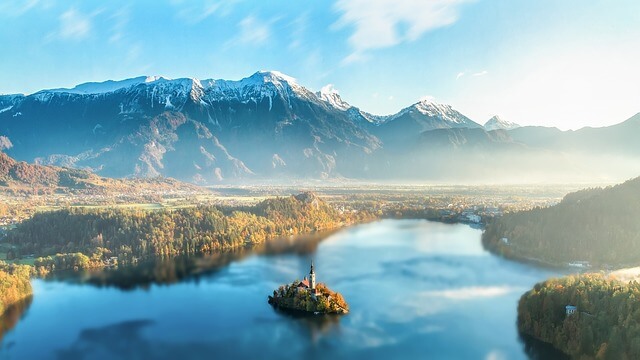
Use a different focal point
In your mountain-view photography, the mountains should never dominate your image.
You may instead use another place to get some perspective on the mountain and use it for the environmental information.
Of course, you can still capture that stunning view. Immediately after this you’ll notice that there’s another subject that’s there.
Plan for the weather
Like planning for lighting, you should also prepare for conditions like the weather. Weather information helps you determine if you should bring extra clothes and rain cover.
Of course it’s also important to know the weather before a snowfall occurs. This is crucial when climbing mountains during the golden hour.
Don’t avoid bad weather
If you plan for bad weather you shouldn’t always stay outdoors. Oftentimes a photographer’s best pictures are taken during a bad weather situation.
Some of the brightest lighting I ever saw happened during a storm break. And if you stay out of it at a bad time, you won’t ever have such a moment.
Wait for the light to come on
The tips are impossible to overstate. You need good mountain landscape photography photos. Unless the light shift occurs in the area, you are not afraid of staying there – even for two hours. Yeah, I know this might sound monotonous, but trust us. This is an extremely worthwhile investment.
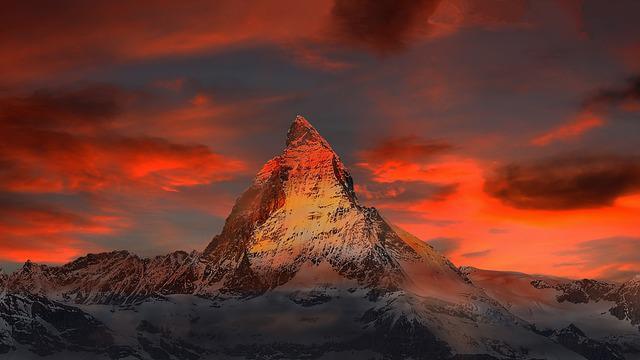
Fill the frame
Mountain is an amazing place. It’s not necessary to put everything together. In addition you should use a piece of content which draws your interest.
It gives your pictures a mountain background. Isn’t that tempting? Taking a moment to look at tiny details in a photo can be surprising.
Fill the frame
Mountain is an amazing place. It’s not necessary to put everything together. In addition you should use a piece of content which draws your interest.
It gives your pictures a mountain background. Isn’t that tempting? Taking a moment to look at tiny details in a photo can be surprising.
Include a human element
I’m not talking about humans. Instead I suggest that people make something that shows the way people live in nearby mountains and incorporate them into their lifestyle.
Mountains are amazing for themselves. They are part of our lives. You can tell a fascinating story with pictures.
Use longer lenses
When you pack for mountain trips, keep a good long lens. Normal-length prime lenses can be good for panorama shots, while telephoto lenses are great for finding smaller details in an image.
There is much space for telephoto lenses, besides large angles which dominate this genre.
Use reflections when possible
If you photograph the mountains at the edge of the ocean there will be plenty of visual interest for you for the foreground. Wait until water has been left. Then use mountain reflection to make the composition. Obviously it’s my taste, but it’s always an excellent combo.
Protect your eyes
Its reflection on snow is very bright. As soon as the clouds rise, the only protective thing that is visible is the eye.
Also be prepared by wearing sun hats as well as sunglasses. Consider getting filters in your lens that reduce light intensity slightly.
Include people in the landscape
As with the previous point, using people to take photos of mountain images will show how large a mountain’s area is. Obviously, there are other things going on.
Because by introducing the human element your audience can understand it.
Plan for the light
We now understand where and from what direction the light will go every day. If you know when you’re going, do some research to find out what direction or place the sun will set. Basically, prepare a shoot based upon this.
Include water in the composition if possible
Photographs by Alberto Restifo – Mountains with great harmony. Lakes or waterways are perfect for your composition.
If you have a commercial photography requirement, please take a look at our Commercial site. Partner sites: Cherubs Photos and Newborn Photography Art Berkhamsted.